A Greek stronghold on the "outskirts" of the Kingdom: Gerace, city of bishops
Gerace stands on the rocky upland that rises between Cape Spartivento and the Roccella promontory, 480 meters above sea level.
The most recent excavation campaigns conducted in these territories have brought to light prehistoric finds and traces of protohistoric settlements. Also frequented during the development of the underlying Greek colony of Locri, the Gerace upland became a military garrison in Roman times.
The foundation of the city occurred gradually, at the end of the 7th century, when the inhabitants of ancient Locri, forced to abandon the dangerous and unhealthy coastal area in which they had previously settled, moved to the hill above. The site, which acquired increasing importance in the Byzantine era, first took on the name of "Santa Ciriaca" (Hagìa Kyriaké), a hagionym from which, according to some, the toponym Gerace later derived.
Opinions on the etymology are still varied and conflicting: the best known proposes the derivation from the Greek hierax, referring to the legend of the sparrowhawk that led the Locrians fleeing from the Saracen incursions to Gerace. The most likely, however, identifies its origin from Iera Akis "sacred peak", after the transfer of the bishop's chair of Locri.
In the Norman age, an extraordinary building and artistic development took place in Gerace, evidenced by the foundation of new churches, the complete renovation of the cathedral and the restoration of the castle.
Declared a royal city in 1300 and entitled county in 1348, Gerace continued to be contested during the 15th century between monarchical power and great feudal families, taking on a role that was anything but secondary in the cultural and political dynamics of the Kingdom, though located very far from the capital. Elected as a marquisate, it remained in the hands of the Cordova family until 1558, enjoying strong economic and cultural growth in the 16th century.
Culture in Gerace had experienced a previous phase of development in the 14th century, under the impetus of Roberto d'Angiò and thanks to the impulse given by some bishops of Greek culture such as Giovannicio Tirseo, Barlaam da Seminara and Simone Atumano.
The persistence of Italian-Greek monasticism would then contribute to the development of a multicultural humanism which found its fulcrum in the diocese entrusted to the care of learned humanists, such as Atanasio Calceopulo, advocate of the transition to the Latin rite.
Subsequently, high-ranking figures such as Tiberio Muti, Andrea Candida, Ottaviano Pasqua, favored the assimilation of the Tridentine dictates in the diocese and assumed a leading role in the urban history of the city, thanks to their artistic and architectural commissions.
What to see here
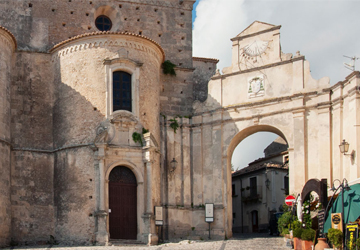
Arch of the Bishops
The Arch marked the end point of the traditional ceremony by which bishops accessed the city, during which the prelate was led to the cathedral on a white donkey.
Read all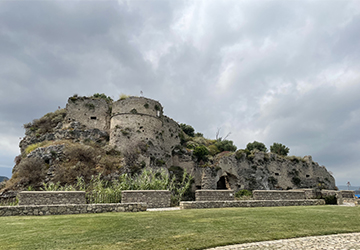
Castle
The castle of Gerace was built around the 8th century on pre-existing Roman fortifications, on a spur of rock separated from the city cliff, to which it was connected with a drawbridge.
Read all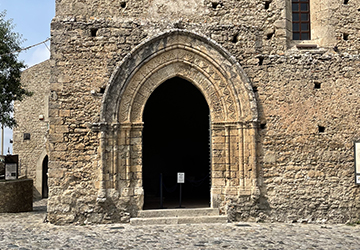
Church of San Francesco d’Assisi
Founded in the second half of the thirteenth century, the church was part of a much larger convent complex than the current one, which is contiguous to the left side front of the building.
Read all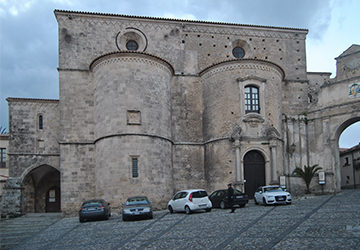
Co-Cathedral Basilica of Santa Maria Assunta
The cathedral was founded in the Norman period between the end of the 11th and the beginning of the 12th century, on a pre-existing and more modest Byzantine church located at the level of the crypt.
Read all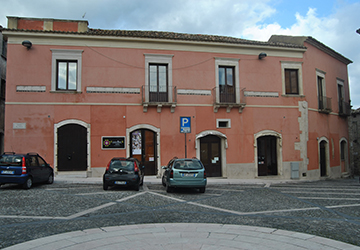
Palazzo Calceopulo
The palace retains traces of its first construction, which dates back to the second half of the fifteenth century.
Read all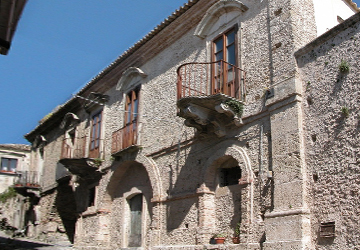
Palazzo Candida
The foundation of palazzo Candida dates back to the second half of the sixteenth century, when the family of the namesake Syracusan bishop followed him to Gerace, after his appointment in 1552.
Read all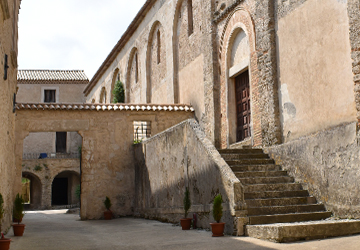
The Bishop's Palace
The palace currently houses part of the diocesan museum as well as the bishop's private residence and was probably built in the Late Middle Ages, at the same time as the construction of the Cathedral.
Read allCasa Lucifero, gate
The house, which has been profoundly transformed over the centuries, preserves an important trace of the activity of Giovan Battista Lucifero, who belonged to a family of skilled stonemasons and architects from Gerace
Read allEpiscopal Seminary
The first Episcopal Seminary of Gerace was founded in 1565 by Bishop Andrea Candida at his expense, according to the decrees of the Counter-Reformation.
Read all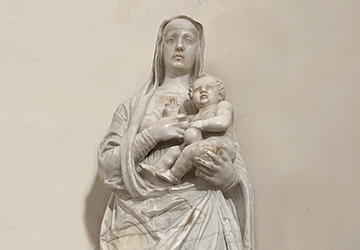
Statue of Santa Maria del Jesus in the Church of the Monastery Of Sant'Anna
The statue, currently located to the right of the altar in the church of the monastery of Sant'Anna, comes from the now destroyed chapel of Santa Maria del Gesù, erected by Countess Caterina Concublet in the church of San Francesco d'Assisi
Read all